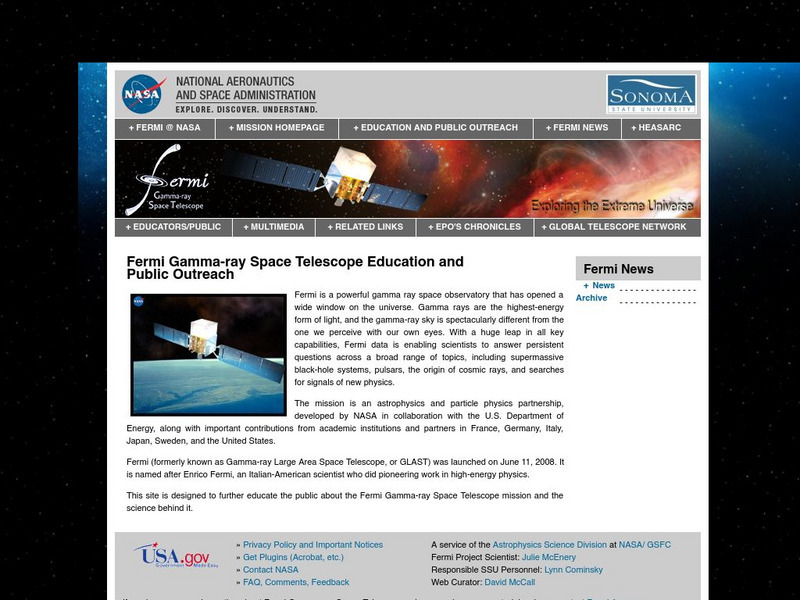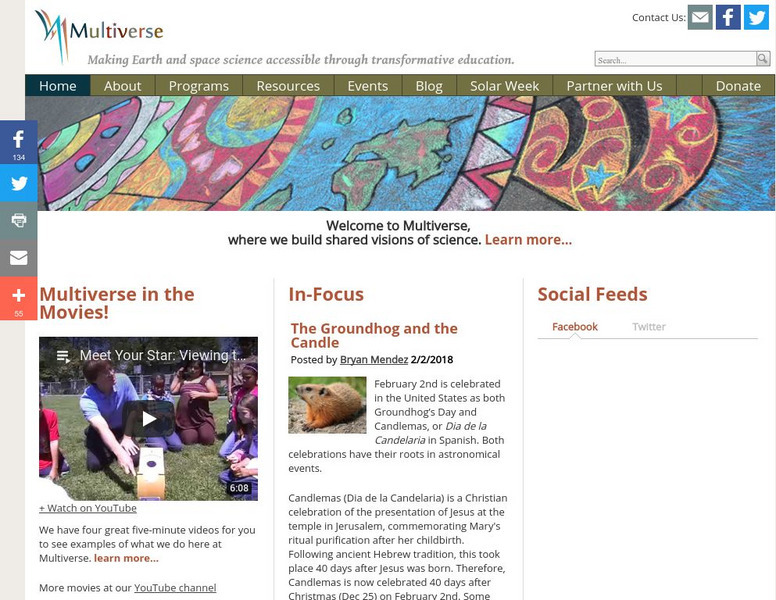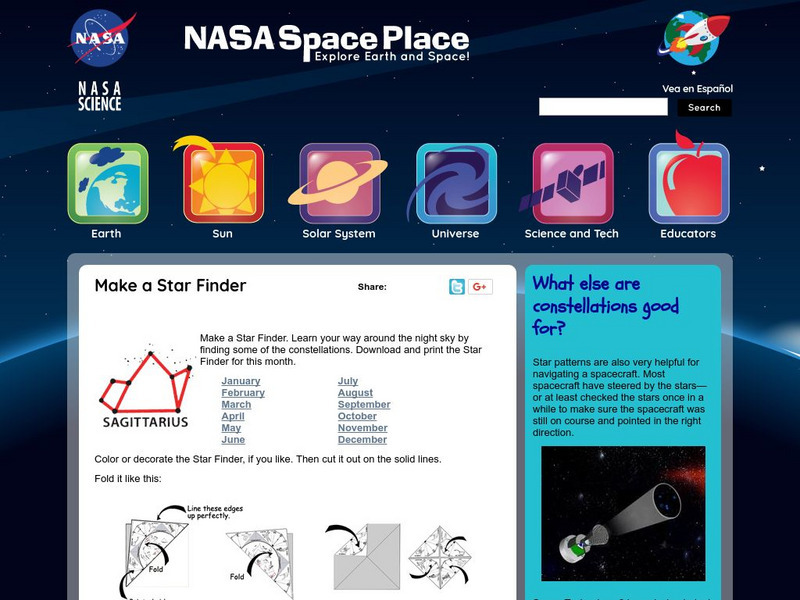Society for Science and the Public
Science News for Students: So Many 'Earths'
Article reports on the recent discovery that many suns in the universe host "Earth-like" planets. Includes a vocabularly list.
PBS
Pbs Kids: Martha Speaks: Socks in Space
After learning seven space-themed vocabulary words, students will go on a space adventure collecting socks. After completing five levels, students will test their new knowledge by matching five words with the pictures that show their...
Math Science Nucleus
I. Science Ma Te: Integrating Science, Math and Technology
This site offers a wealth of online textbook-related materials that encourage the discovery of science in the world around us. Enter the site to access material on specific topics. Each section contains reading material (complete with...
American Association of Physics Teachers
Com Padre Digital Library: Physics to Go: Explore Physics on Your Own
Contains a full physics curriculum with links to games, webcasts, and activities. By creating a free account, students and teachers can create their own personal collection of resources.
Symmetry Magazine
Symmetry Magazine: Explain It in 60 Seconds: Neutralinos
Neutralinos, described here, are hypothesized particles of dark matter. Scientists hope to confirm their existence through their research with the Large Hadron Collider. "Explain It In 60 Seconds" is an article series that aims to...
PBS
Pbs Teachers: Shackleton's Antarctic Odyssey: Let the North Star Tell You Where
Through this instructional activity, young scholars will understand how to determine latitude and locate specific stars in the night sky. They will also have a chance to build and use an astrolabe.
Symmetry Magazine
Symmetry Magazine: Explain It in 60 Seconds: Dark Energy
Dark energy, described here, is the ultimate mystery for scientists. It is the force that is causing the expansion of the universe they believe. "Explain It In 60 Seconds" is an article series that aims to summarize in a few paragraphs...
Space Telescope Science Institute
Space Telescope Science Institute
The homepage for the Space Telescope Science Institute provides a variety of resources on the James Webb Space Telescope and Hubble Telescope. Also provided is information on the institute itself, a data archive, and a wide range of...
NASA
Nasa: Kepler: A Search for Habitable Planets: Transit Tracks
Classroom lesson for teaching astronomy uses PowerPoint presentations and illustrations of Kepler's light curves used to discover planets.
California Institute of Technology
Ipac: Iras Gallery
This site from IPAC is a series of images of various celestial objects and regions as viewed in infrared light. Each photo is accompanied by a caption.
Sonoma State University
The Gamma Ray Large Area Space Telescope (Glast)
Background information on gamma rays and the sources of gamma rays in the universe. Discusses the purpose of the GLAST space mission and the types of findings which they wish to make. A link to the GLAST movie provides an excellent...
Other
British National Space Centre: Missions a Z
Descriptions of space missions the United Kingdom was involved in as of 2006. Information is dated and further research is required to discover the success of these missions. From the British National Space Centre.
Views of the Solar System
Views of the Solar System: The Solar System
Explore the solar system through this site that includes vivid multimedia resources. Learn the latest scientific discoveries, the history of space exploration, and much more. Site includes videos, graphics, articles, and photographs.
NASA
Nasa: Visible Earth: 3 D Data From Ice Sat
3-D Data from ICESat: Orbiting the Earth at nearly 17,000 miles per hour, NASA's Ice, Cloud and land Elevation Satellite (ICESat) is collecting spectacular new three-dimensional measurements of the Earth's surface and atmosphere.
NASA
Nasa: Wernher Von Braun
NASA profiles Wernher von Braun, "one of the most important rocket developers and champions of space exploration during the period between the 1930s and 1970s."
PBS
Pbs Teachers: Mysteries of the Universe
Consider the issues surrounding the world of space exploration including the new fields of archaeoastronomy and astrobiology. Investigate zero gravity, the Big Bang theory, life in space and how sound travels in a vacuum.
Other
Lunar and Planetary Institute: Explore! Marvel Moon
A variety of hands-on activities designed to engage children in learning about the moon.
Other
Popular Mechanics: Space Science
Popular Mechanics covers the latest news in space science. Here are several current articles on this topic.
Other
Lunar and Planetary Institute: Explore! Mars Inside and Out
Four hands-on activities and explorations designed to engage children in learning about Mars.
University of California
Multiverse
Resource works to increase diversity in Earth and Space science through multicultural education.
E-learning for Kids
E Learning for Kids: Science: Antarctica/ What Are the Different Parts of the Universe?
In this lesson, students learn about objects in the universe, including constellations, planets, meteors, asteroids, and comets.
Other
Chrono Zoom: Cosmos
An easy way to put historical events into perspective! This interactive timeline features the events of the cosmos.
NASA
Nasa: Make a Star Finder
Learning game and activity that teaches about the constellations by making a star finder to help locate them.




















